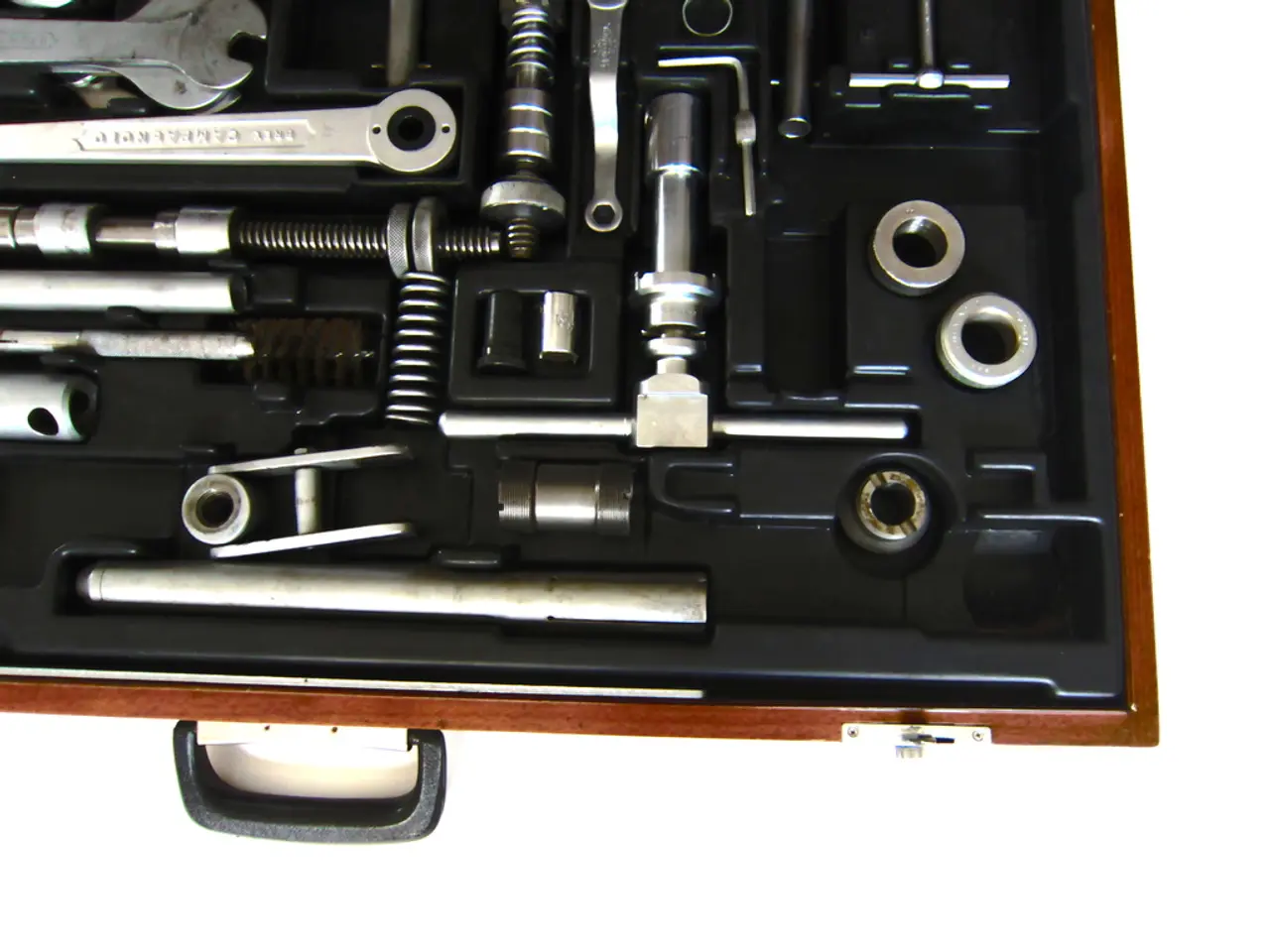Understand the purpose of a coping saw and its importance in your home DIY tool collection.
The coping saw, a type of bow saw, is an essential tool for any DIY enthusiast or woodworker, particularly when it comes to cutting intricate curved or rounded shapes. This versatile tool excels at tasks such as cutting the shapes of door jambs, creating intricate patterns in ornate mouldings, and scribing skirting boards to fit neatly into corners.
In woodworking, a coping saw is commonly used to cut wooden flooring where it meets a door frame. Its narrow blade, held in place by pins, offers more control, making it ideal for cutting shapes and curves in decorative features. The coping saw's U-shaped metal frame and wooden handle provide a comfortable grip, allowing for precise and detailed cuts.
For softer metals like aluminum, tin, and copper, as well as plastics like PVC plumbing pipes, a coping saw with a 24 teeth per inch (TPI) blade can be used. This makes it a versatile tool for a variety of materials.
A quality everyday coping saw features a lacquered wooden handle and a nickel-plated frame that holds a 14 TPI hardened and tempered carbon steel blade. A coping saw set typically includes a wooden-handled, steel-framed coping saw and a ten pack of hardened steel blades suitable for most coping saws.
For those who require a finer finish, coping saw blades come in a variety of sizes that range in teeth per inch. While 5 TPI provides a quicker and more aggressive cut, 24 TPI is slower and more precise, ideal for a smooth finish.
In restoration work, a coping saw's control adapts trim to uneven plaster or out-of-plumb framing, keeping historic character intact. It is also useful in selective removal between studs or in tight cavities where a powered blade would damage surrounding surfaces.
Brands such as Bahco and Eclipse are trusted for their coping saws in both site install kits and furniture shops. A mixed set of coping saw blades includes three sets of six and a half inch pin end coping saw blades, with two six packs of 18TPI blades and one six pack of 15TPI blades, offering a variety of options for different projects.
The coping saw derives its name from a carpentry technique called the cope, which is used to shape the end of wood so it fits neatly into the contours of the wood it is being joined to. This tool's finesse and control make it a distinguished choice for delicate cuts, setting it apart from heavier-duty saws like circular saws or hacksaws.
- In home improvement projects, building and installing new flooring might require using a coping saw to meticulously cut wooden flooring where it meets a door frame.
- A coping saw is not only beneficial for woodworking tasks; it can also be used for cutting softer materials like aluminum, tin, copper, and PVC plumbing pipes.
- For a finer finish or projects demanding precision, there are coping saw blades available with varying teeth per inch (TPI), such as 5 TPI for a quicker, more aggressive cut and 24 TPI for a slower, more precise one.
- In the world of home-and-garden and home-improvement guides, a coping saw is frequently recommended as an essential tool for DIY enthusiasts and those engaged in lifestyle renovation projects.
- When purchasing a coping saw set, homeowners and woodworkers can expect to find not only the saw itself but also additional hardened steel blades suitable for a variety of projects, like those from trusted brands such as Bahco and Eclipse.






